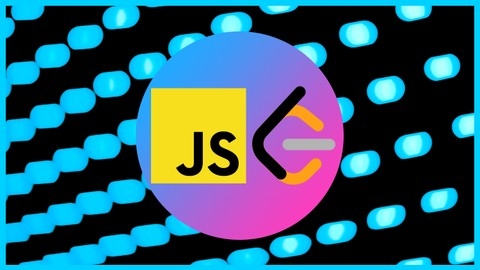Python Data Structures & Algorithms + LEETCODE Exercises
This course begins with the basics, such as setting up your code editor, and progresses to advanced topics, ensuring a complete understanding of essential concepts and their application in Python.
The journey starts with an “Overview” to guide you on how to benefit fully from the course.
You’ll quickly move on to Big O notation, learning to evaluate algorithm efficiency through lectures and quizzes on O(n), O(n^2), O(log n), and more.
This foundational knowledge is crucial for writing efficient code.
As you advance, the course covers key data structures, including classes, pointers, linked lists (LL), doubly linked lists (DLL), stacks, queues, trees, hash tables, graphs, and heaps.
Each section offers detailed explanations and Python implementations, complemented by coding exercises that reinforce your learning.
Sorting algorithms aren’t left out.
You’ll gain hands-on experience with bubble sort, selection sort, insertion sort, merge sort, and quick sort, understanding not just how to implement them but also their performance implications.
A standout feature of this course is its focus on interview and LEETCODE exercises.
After mastering each data structure or algorithm, you’ll tackle challenges that mirror real interview questions, from linked list manipulations to dynamic programming problems like memoization in the Fibonacci sequence.
The course also explores tree traversal (BFS and DFS), dynamic programming, and strategies for solving overlapping subproblems.
This approach ensures you’re equipped not just with coding skills but also with problem-solving strategies.
Wrapping up with a “Thank You!” note, the course emphasizes continuous practice.
You’re encouraged to revisit sections and exercises to solidify your understanding and skills.
Java Data Structures & Algorithms + LEETCODE Exercises
This course covers everything from the basics to advanced topics, making it ideal for beginners and those looking to refresh their skills.
The journey begins with an introduction to Java and strategies to maximize your learning.
Quickly moving forward, you’ll grasp Big O notation, learning to evaluate algorithm efficiency, understand worst-case scenarios, and recognize when to simplify your calculations.
This foundational knowledge is crucial for coding interviews and effective problem-solving.
The course extensively covers various data structures, including classes and pointers, linked lists (LL), doubly linked lists (DLL), stacks, queues, trees, hash tables, graphs, and heaps.
Each section offers detailed lectures on implementation in Java, operational insights, and performance analysis.
Quizzes and coding exercises are integrated throughout to solidify your understanding and application skills.
For linked lists, the course walks you through construction, manipulation, and advanced interview-level questions, such as detecting loops or finding the middle node.
Similarly, with doubly linked lists, you’ll learn operations like appending, removing, and checking for palindromes.
Stacks and queues are not just about implementation; you’ll also tackle real-world problems, like using stacks for balanced parentheses checks or simulating queues with two stacks.
The course doesn’t shy away from complex topics like trees and graphs, offering in-depth lessons on binary search trees (BST), tree traversal techniques (BFS and DFS), and graph operations.
Sorting algorithms, including bubble, selection, insertion, merge, and quick sorts, are demystified, teaching you the mechanics and appropriate use cases of each.
Dynamic programming is introduced with strategies like memoization and bottom-up approaches to solve problems efficiently, tackling classic challenges like the Fibonacci sequence.
LEETCODE exercises specific to each topic, from linked lists and trees to dynamic programming and sorting algorithms, are a significant part of the course.
These challenges test your knowledge and prepare you for technical interviews with problems ranging from array manipulation to validating BSTs and optimizing solutions.
JavaScript Data Structures & Algorithms + LEETCODE Exercises
The journey begins with an introduction to the basics, including setting up your code editor, followed by a deep dive into Big O notation.
This section is crucial for understanding algorithm efficiency, covering everything from O(n) to O(log n), and teaching you how to evaluate your code’s performance effectively.
The course then moves on to Classes and Pointers, essential for grasping more complex data structures.
You’ll explore Linked Lists (LL) and Doubly Linked Lists (DLL), learning their inner workings and practicing with coding exercises.
These sections also include targeted interview and LEETCODE exercises, sharpening your problem-solving skills.
Stacks and Queues are next, where you’ll learn their implementation and analyze their performance.
The course ensures you get hands-on experience through coding exercises and interview questions, reinforcing your understanding.
In the Trees and Graphs sections, you’ll tackle Binary Search Trees (BST) and delve into graph theories.
These modules are packed with exercises that challenge you to apply what you’ve learned, from tree traversals to graph algorithms.
Sorting algorithms form a core part of the curriculum, with detailed lessons on Bubble Sort, Selection Sort, Insertion Sort, Merge Sort, and Quick Sort.
Each algorithm is accompanied by practical coding exercises and interview questions, preparing you for real-world applications.
Dynamic Programming is covered extensively, focusing on strategies like memoization and bottom-up approaches.
You’ll apply these to various problems, including the Fibonacci sequence, enhancing your problem-solving repertoire.
The course concludes with a series of coding exercises across a broad spectrum of topics, from arrays to dynamic programming.
These exercises test your knowledge and readiness for technical interviews.
LEETCODE In Python: Algorithms Coding Interview Questions
The “LEETCODE In Python: Algorithms Coding Interview Questions” course covers a wide range of topics and problem-solving techniques that are essential for coding interviews.
The syllabus is well-structured, starting with an introduction and then diving into various problem categories like arrays, math, hash tables/dictionaries, linked lists, backtracking, trees, stacks, queues, dynamic programming, and more.
You’ll learn how to approach and solve popular coding interview questions from top tech companies like Google, Amazon, Facebook, Microsoft, and others.
The course provides a comprehensive understanding of each problem, including explanations, intuitions, pseudocode walkthroughs, and multiple approaches for solving them.
For example, in the array section, you’ll tackle questions like “Container with Most Water” from Microsoft, “Valid Mountain Array” from Google, and “Move Zeroes” from Facebook.
The course will guide you through brute force solutions, optimized approaches, and efficient implementations.
Moving on, you’ll explore hash table/dictionary problems like “Two Sum” from Google, “Group Anagrams” from Facebook, and the challenging “Minimum Window Substring” from LinkedIn.
These problems will help you understand the power of hash tables and how to leverage them effectively.
The linked list section covers essential problems like “Merge Two Sorted Lists” from Apple, “Reverse Linked List” from Microsoft, and the tricky “Add Two Numbers” from Adobe.
You’ll learn various techniques for manipulating linked lists, such as reversing, merging, and performing arithmetic operations.
The course also covers backtracking problems like “Subsets” from Facebook, “Letter Combinations of a Phone Number” from Amazon, and “Palindrome Partitioning” from Bloomberg.
These problems will teach you how to visualize and understand recursive and backtracking solutions.
In the trees section, you’ll tackle questions like “Symmetric Trees” from Microsoft, “Lowest Common Ancestor of a Binary Tree” from Facebook, and the challenging “Binary Tree Maximum Path Sum” from Microsoft.
You’ll learn various tree traversal techniques and how to solve problems involving binary trees and binary search trees (BSTs).
The dynamic programming section covers popular problems like “House Robber” from Google, “Best Time to Buy and Sell Stocks” from Facebook, and the challenging “Trapping Rain Water” from Amazon.
You’ll learn how to identify and solve problems using dynamic programming techniques.
Additionally, the course includes optional sections on Big O notation, binary search, sliding window technique, hash tables, linked lists, stacks, queues, graphs, depth-first search (DFS), breadth-first search (BFS), Dijkstra’s algorithm, trees, and binary search trees.
These sections provide a solid foundation in data structures and algorithms, which are essential for coding interviews.
LeetCode in Java: Algorithms Coding Interview Questions
This “LeetCode in Java: Algorithms Coding Interview Questions” course provides a comprehensive syllabus covering a wide range of topics essential for coding interviews.
The course starts with an introduction and then dives into integer-based problems like FizzBuzz, Single Number, and Palindrome Number from companies like LinkedIn, Amazon, and Facebook.
You’ll then move on to string manipulation problems such as Reverse String, Longest Common Prefix, and the challenging Longest Palindromic Substring asked by companies like Microsoft, Facebook, and Google.
The syllabus covers binary search algorithms like Search in Rotated Sorted Array from Facebook.
Array problems form a significant part, including classics like Two Sum from Google, Best Time to Buy and Sell Stock from Facebook/Microsoft, and advanced problems like Product of Array Except Self from Facebook.
Two-pointer techniques are covered through problems like 3Sum from Facebook.
The course dives deep into data structures like stacks, queues, linked lists, binary trees, binary search trees, tries, and heaps.
You’ll learn to solve problems like Valid Parentheses from Facebook, Reverse Linked List from Google/Facebook, and Implement Trie from Amazon/Microsoft.
Recursion and backtracking are covered extensively with problems like Permutations from Google, Combinations from Google/Facebook/Amazon, and the challenging Partition to K Equal Sum Subsets from Microsoft.
Graph theory concepts like BFS, DFS, and topological sort are taught using problems from companies like Samsung, Microsoft, and Google.
Finally, you’ll learn essential dynamic programming patterns through problems like Climbing Stairs from Google/Microsoft/Amazon, Coin Change from Amazon/Microsoft, and the famous Edit Distance problem asked by Google, Amazon, and Microsoft.
The syllabus also covers bit manipulation problems.
C++ Data Structures & Algorithms + LEETCODE Exercises
The course kicks off with an introduction that sets you up for success, followed by detailed instructions on configuring your coding environment.
Whether you use Windows, Linux, or Mac, you’ll receive step-by-step guidance for installing VS Code and the necessary compilers, allowing you to dive into coding without delay.
A deep dive into Big O notation early in the course equips you with the skills to assess your algorithms’ efficiency.
This foundational knowledge is crucial for writing high-performance code from the start.
The curriculum spans a wide array of topics, including pointers, classes, linked lists (LL), and doubly linked lists (DLL).
Each section is packed with coding exercises to solidify your understanding.
You’ll also explore stacks, queues, trees, and hash tables, gaining hands-on experience in managing data structures and implementing key algorithms.
Graphs, recursion, and sorting algorithms, from bubble sort to quick sort and merge sort, are thoroughly covered.
You’ll learn not just the theory but also the practical application of these algorithms, with exercises to test your skills.
Dynamic programming is another critical area this course covers, teaching you strategies like memoization and the bottom-up approach to solve problems efficiently.
Moreover, the course includes specialized sections for interview and LEETCODE exercises across various topics, ensuring you’re well-prepared for technical interviews.
Throughout the course, quizzes and coding exercises are strategically placed to reinforce learning and enhance problem-solving skills.
Whether tackling a palindrome checker, optimizing a Fibonacci sequence, or solving dynamic programming challenges, you’ll engage with real-world problems.
Data Structures Algorithm DSA | Python+Javascript LEETCODE
This comprehensive course starts with the fundamentals, introducing you to data structures and algorithm complexity, including Big O notation.
You’ll quickly move on to tackle arrays, learning essential operations and solving problems like creating a sorted squared array and identifying monotonic arrays.
As the course progresses, you’ll explore more complex data structures such as hash tables, linked lists (singly and doubly), and stacks and queues.
Each section includes coding interview questions from leading tech companies, offering you practical experience.
For example, you’ll get to design a stack using a linked list and implement a queue with a stack, gaining hands-on skills that are directly applicable to real-world scenarios.
The course doesn’t stop there.
You’ll also master sorting algorithms like merge sort, quick sort, and radix sort, understanding both their implementation and the logic behind their efficiency.
Recursion is another key topic, with exercises on the Fibonacci sequence and power sum calculations to solidify your understanding.
Graphs are covered in depth, with lessons on breadth-first search (BFS) and depth-first search (DFS), taught both recursively and iteratively.
You’ll solve complex problems such as determining the number of components in a graph and using topological sort for course scheduling.
What sets this course apart is its practical approach.
After each lecture, you’re challenged with quizzes and coding exercises in both Python and JavaScript, allowing you to apply what you’ve learned right away.
Solutions are thoroughly explained, including Big O analysis, to give you a deep understanding of why certain solutions work best.
Additionally, the course includes a lecture on study techniques to help you focus and study more effectively, preparing you not just technically but also mentally for coding interviews and professional challenges.
JavaScript & LeetCode | The Interview Bootcamp
The course covers a wide range of topics, from the fundamentals of JavaScript to advanced data structures and algorithms.
You’ll start with an optional JavaScript crash course, ensuring that everyone is on the same page before diving into the meat of the content.
The course then guides you through setting up your development environment on both Windows and macOS, so you can follow along seamlessly.
One of the standout features of this course is its comprehensive coverage of strings.
You’ll tackle problems like validating palindromes, finding the longest palindromic substring, and working with anagrams.
These concepts are essential for many coding interviews.
The course also delves deep into dynamic programming, a powerful technique for solving complex problems.
You’ll learn how to apply dynamic programming to challenges like climbing stairs, robbing houses, and finding the longest increasing subsequence.
Array manipulation is another critical skill covered in the course.
You’ll learn how to handle tasks like finding duplicates, calculating products, and solving the famous “two sum” and “3sum” problems.
These concepts are fundamental to many coding interviews.
The course also covers intervals, matrices, linked lists, and trees.
You’ll learn how to merge intervals, spiral through matrices, reverse linked lists, and traverse binary trees.
These data structures are ubiquitous in coding interviews, so mastering them is crucial.
Throughout the course, you’ll work on real LeetCode problems, ensuring that you’re well-prepared for coding interviews.
The course also provides additional resources and a YouTube channel for further learning.
100 Leetcode Challenge - Coding Interview
The course covers a wide range of coding problems from LeetCode, designed to prepare you for coding interviews.
You’ll start with an introduction and then dive into solving the first 100 questions with the instructor.
These include classic problems like Symmetric Tree, Invert Binary Tree, Two Sum, and Palindrome Linked List, as well as more advanced topics like N-ary Trees, Backspace String Compare, and Number of Islands.
The course follows a hands-on approach, with the instructor walking you through solutions step-by-step.
You’ll learn various techniques and data structures like linked lists, binary trees, hashmaps, and more.
The problems gradually increase in difficulty, from easy to medium to hard, ensuring you’re constantly challenged and improving.
Along the way, you’ll tackle problems involving arrays, strings, linked lists, trees, graphs, dynamic programming, and other core computer science concepts.
Some notable problems include Container With Most Water, 3Sum Closest, Reconstruct Itinerary, and Minimum Size Subarray Sum.
You’ll also learn to solve real-world coding challenges like Course Schedule, Design Tic-Tac-Toe, and License Key Formatting.
The course covers a diverse set of topics, from classic algorithms like Binary Search and Fibonacci Number to more niche areas like Divide Array in Sets of K Consecutive Numbers and Hand of Straights.
You’ll learn to approach problems systematically, optimize solutions for better time and space complexity, and write clean, efficient code.
Solving LeetCode’s Top Interview Questions in Java [2024]
The course covers a wide range of topics, from arrays and strings to linked lists, trees, sorting and searching, dynamic programming, and more.
You’ll start with arrays, learning how to remove duplicates, rotate arrays, and find the best time to buy and sell stocks.
Then, you’ll move on to strings, where you’ll learn how to reverse strings, find unique characters, and validate anagrams and palindromes.
Next up is linked lists, a crucial data structure for interviews.
You’ll learn how to delete nodes, remove nodes from the end, reverse linked lists, merge sorted lists, and detect cycles.
The course also covers trees in-depth, including depth-first and breadth-first search algorithms.
You’ll learn how to find the maximum depth of a binary tree, validate binary search trees, check for symmetry, and convert sorted arrays to binary search trees.
Sorting and searching are essential topics, and the course covers merging sorted arrays and binary search.
Dynamic programming is another important concept, and you’ll learn how to solve problems like climbing stairs, buying and selling stocks, finding maximum subarrays, and robbing houses.
The course also covers object implementation with problems like shuffling an array and implementing a min stack.
Math problems like FizzBuzz, counting primes, and converting Roman numerals are also included.
Other topics covered include bit manipulation, Pascal’s triangle, valid parentheses, and finding missing numbers.
Additionally, you’ll learn about the longest increasing subsequence problem.
With its practical examples and problem-solving approach, you’ll be well-prepared to tackle LeetCode’s top interview questions.










![Solving LeetCode's Top Interview Questions in Java [2024]](/img/best-leetcode-courses-udemy/5002604_SolvingLeetCodesTopInterviewQuestionsinJava2024.jpg)